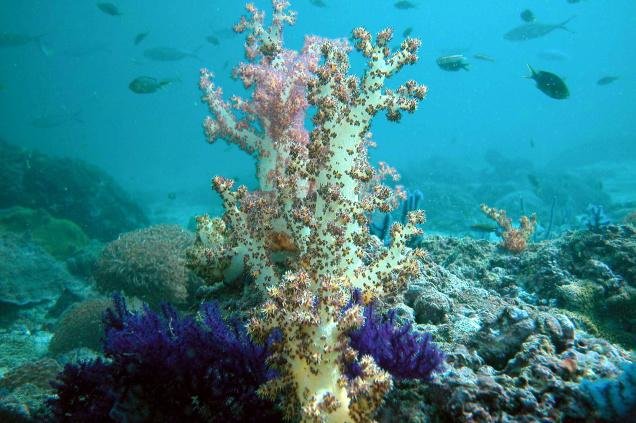Algae that are becoming far less edible for water fleas and fish, leaving them to starve. Aquatic animals undergoing unwanted sex changes. And fish on their annual run struggling to locate their spawning ground. These are some of the disruptive effects of pharmaceutical residues on the aquatic environment.
"Chemical substances from pharmaceuticals wreak havoc on underwater chemical communication," says the head of the NIOO's department of Aquatic Ecology, Ellen van Donk. She's been heading a team of Dutch, German and US researchers, who take stock of the problem in the next issue of Reviews of Environmental Contamination and Toxicology. "The effects are becoming more and more visible in lakes and ponds worldwide, if you know what to look for."
Smellscape
Unnoticeable to most people, there's an endless stream of 'chatter' going on below the water's surface. Most of that chatter takes the form of infochemicals: chemical substances released by aquatic plants and animals that travel through the water. Just think of the scent of a water flea that is picked up by a fish.
Aquatic organisms depend on this intricate 'smellscape' of information to locate mates and food, and to steer clear of natural enemies. But even low concentrations of pharmaceutical compounds can have a huge impact. "Some of these substances may closely resemble natural infochemicals," explains Van Donk, "so they may unintentionally trigger a similar reaction. Or they could do just the opposite and block vital communications."
Increase
Ever larger amounts of pharmaceutical residues, such as female hormones from the contraceptive pill, have been finding their way into the water -- through urination by humans and livestock. These residues are not easily biodegradable, and sewage treatment plants are not equipped to remove them.
"There are no hard figures," says Van Donk, "but surface water measurements suggest that concentrations of residues from hormones, anti-depressants and painkillers have in fact increased substantially."
Solutions
The best way to fight this insidious global change, according to Van Donk and her team, is to find more effective wastewater treatment methods. "In addition, we should look at how pharmaceuticals can be processed better by the human body." It may, for instance, be possible to make pharmaceuticals biodegradable or to absorb them completely.
"At the NIOO, we have been experimenting with an alternative wastewater treatment method that makes use of micro-organisms and algae," adds Van Donk. "This method is allowing us to recycle valuable so-called 'waste' materials, and we're now investigating if it could also help us break down pharmaceutical residues more successfully."
Journal Reference:
- Ellen Van Donk, Scott Peacor, Katharina Grosser, Lisette N. De Senerpont Domis, Miquel Lürling. Pharmaceuticals May Disrupt Natural Chemical Information Flows and Species Interactions in Aquatic Systems: Ideas and Perspectives on a Hidden Global Change. Reviews of Environmental Contamination and Toxicology, November 2015 DOI




Comment: An ideal solution, but one that is unlikely to gain traction would be to reconsider the wholesale drugging of the population and indiscriminate prescribing of 'medicines' that are often ineffective, if not outright dangerous.